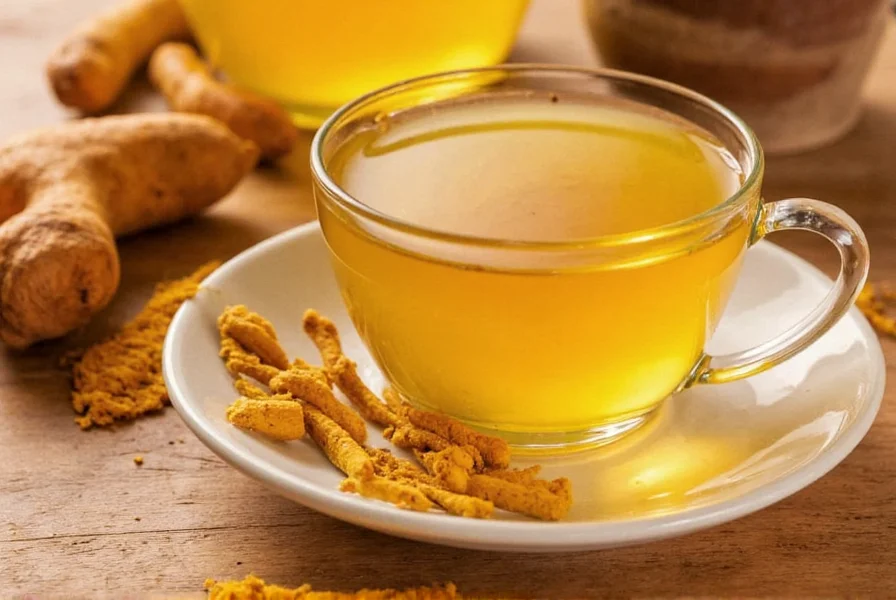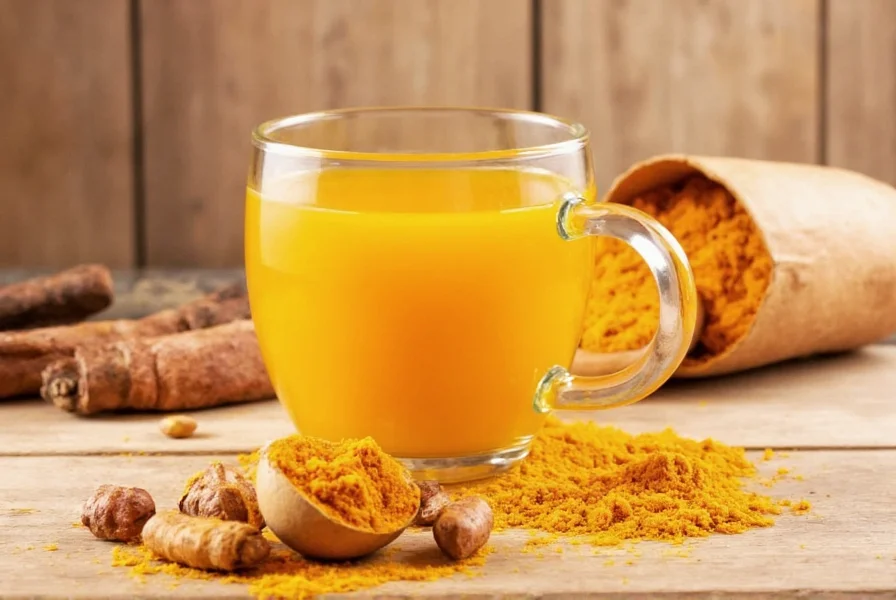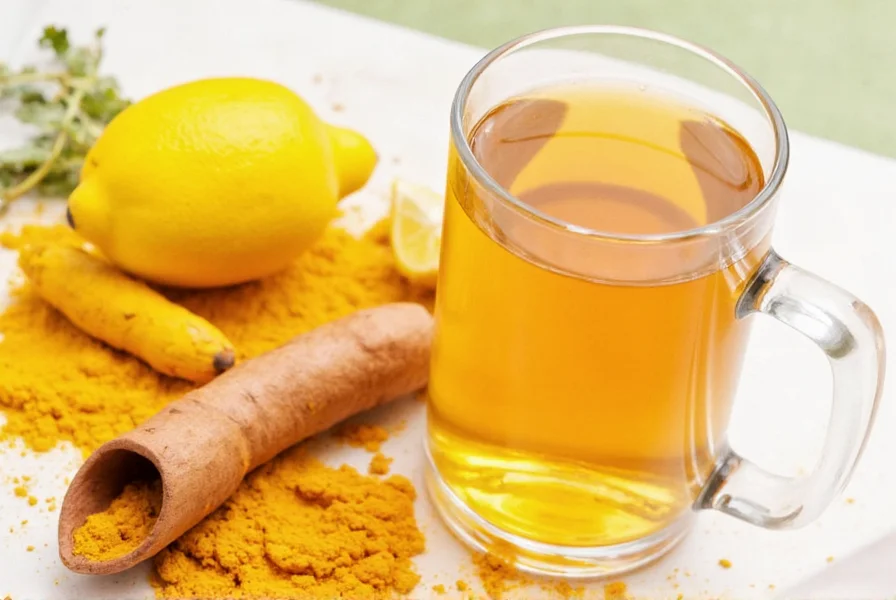The Science Behind Turmeric and Tea
Turmeric, a vibrant yellow spice derived from the Curcuma longa plant, contains curcumin—the compound responsible for most of its health properties. While turmeric alone has limited bioavailability, combining it with black pepper (which contains piperine) increases absorption by up to 2,000%. This scientific insight is crucial when preparing effective turmeric tea for maximum health benefits of turmeric tea.
Multiple studies published in journals like Food Science & Nutrition and Journal of Medicinal Food indicate that regular consumption of properly prepared turmeric tea may reduce inflammation markers in the body. However, it's important to note that turmeric tea shouldn't replace medical treatment for chronic conditions, but rather complement a balanced approach to wellness.

How to Make Turmeric Tea: A Simple Recipe
Creating authentic turmeric tea requires more than just mixing powder with hot water. For optimal results when learning how to make turmeric tea:
- Simmer 1 teaspoon of turmeric powder (or 1-inch fresh turmeric root) in 2 cups of water for 10 minutes
- Add ⅛ teaspoon black pepper to enhance curcumin absorption
- Include a healthy fat like coconut oil or almond milk (curcumin is fat-soluble)
- Optional additions: ginger for digestion, lemon for vitamin C, or honey for taste
- Strain and enjoy warm
This turmeric tea recipe for inflammation balances traditional preparation methods with modern scientific understanding. The simmering process extracts more curcumin than simple steeping, while the black pepper and fat components address bioavailability challenges.
Health Benefits: What Research Says
While traditional medicine has used turmeric for centuries, contemporary research provides evidence for several potential benefits:
| Benefit | Scientific Support | Recommended Consumption |
|---|---|---|
| Anti-inflammatory effects | Multiple studies show reduced inflammation markers | 1-2 cups daily for chronic inflammation |
| Digestive support | Traditional use supported by preliminary research | After meals for optimal digestion |
| Antioxidant properties | Strong evidence of free radical scavenging | Regular consumption for cellular protection |
| Joint health | Studies suggest improvement in arthritis symptoms | Consistent daily use for 8+ weeks |
Research on does turmeric tea help with arthritis shows promising results, with one 2016 study in the Journal of Medicinal Food reporting significant improvement in knee osteoarthritis symptoms among participants who consumed curcumin supplements. While tea may provide similar benefits, the concentration is typically lower than supplement forms.
Timing Matters: Best Time to Drink Turmeric Tea
Understanding the best time to drink turmeric tea maximizes its potential benefits. Morning consumption may support immune function throughout the day, while evening tea could leverage turmeric's potential anti-inflammatory effects during the body's natural repair cycle. Some people prefer drinking turmeric tea before meals to support digestion, while others find it beneficial after dinner to aid overnight recovery.
For those exploring golden milk vs turmeric tea differences, note that golden milk typically contains more fat (from dairy or plant-based milk) which enhances curcumin absorption, while traditional turmeric tea may have less fat but offers a lighter option. Both can be valuable components of a wellness routine when prepared correctly.

Safety Considerations and Side Effects
Turmeric tea side effects are generally mild but worth noting. Some individuals may experience digestive discomfort when first introducing turmeric. Those taking blood thinners should consult their healthcare provider before regular consumption, as turmeric may enhance blood-thinning effects. The recommended daily limit for curcumin is approximately 500-2,000 mg, which translates to 1-4 cups of properly prepared turmeric tea.
Unlike medicinal supplements, turmeric tea for immune system support provides a gentler, food-based approach to wellness. However, it's not a cure-all—managing expectations about what turmeric tea can realistically achieve is essential for maintaining a balanced perspective on natural wellness approaches.
Conclusion: Integrating Turmeric Tea Wisely
Turmeric tea represents a bridge between traditional wisdom and modern science. When prepared thoughtfully with attention to bioavailability factors, it can be a valuable component of a holistic wellness routine. The key is consistency and realistic expectations—regular consumption as part of a healthy lifestyle yields better results than occasional use expecting dramatic effects.
Frequently Asked Questions
How much turmeric should I use for one cup of tea?
For a standard 8-ounce cup, use ½ to 1 teaspoon of turmeric powder or 1-inch piece of fresh turmeric root. This provides approximately 200-500mg of curcumin, the active compound. Remember to include a pinch of black pepper and a small amount of healthy fat for optimal absorption when making turmeric tea at home.
Can I drink turmeric tea every day?
Yes, most adults can safely consume 1-2 cups of turmeric tea daily. Research suggests consistent daily consumption provides the best results for inflammation reduction and other potential benefits. However, if you have gallbladder issues, are pregnant, or take blood-thinning medications, consult your healthcare provider before making turmeric tea a daily habit.
How long does it take to feel benefits from turmeric tea?
Most people notice subtle effects after 4-6 weeks of consistent daily consumption. For inflammation-related concerns like joint pain, studies suggest 8-12 weeks of regular turmeric tea consumption may be needed to experience noticeable improvements. The timeline varies based on individual factors including metabolism, overall health, and the specific condition being addressed.
Does turmeric tea help with weight loss?
Turmeric tea isn't a weight loss solution, but it may support metabolic health as part of a comprehensive approach. Some research indicates curcumin might help regulate fat metabolism and reduce inflammation associated with obesity. However, significant weight loss requires dietary changes, exercise, and lifestyle modifications—turmeric tea alone won't produce dramatic results.
Can I use ground turmeric instead of fresh root?
Yes, ground turmeric works well for tea and often contains higher curcumin concentration than fresh root. Use ½ teaspoon of ground turmeric per cup as a starting point. The main difference is fresh turmeric provides additional volatile oils that may offer complementary benefits. Both forms are effective when prepared with black pepper and a fat source to maximize the health benefits of turmeric tea.











 浙公网安备
33010002000092号
浙公网安备
33010002000092号 浙B2-20120091-4
浙B2-20120091-4